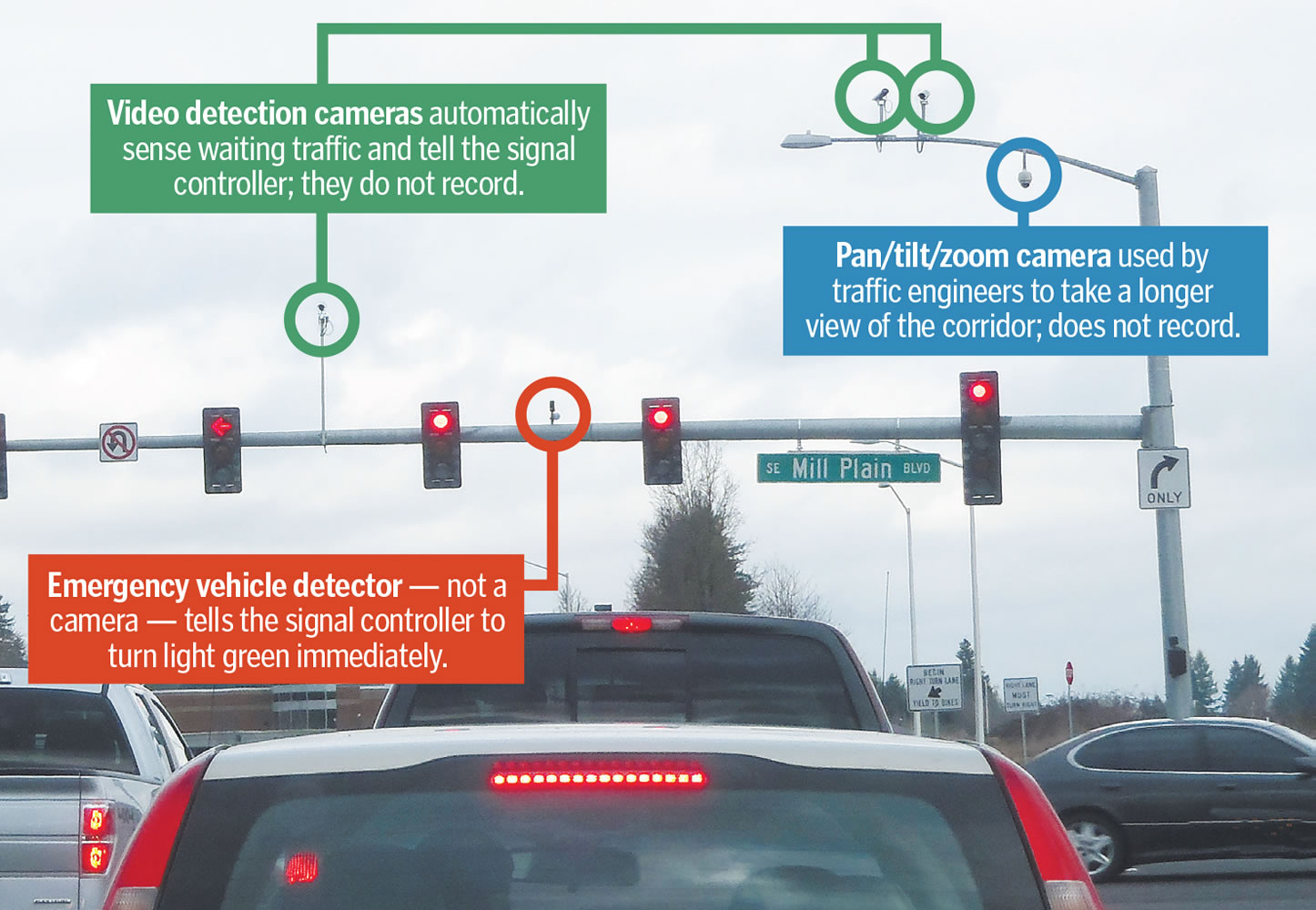At Southeast Mill Plain Boulevard and 136th Avenue, I count five traffic signals. But there are at least five other items attached to the lighting standards. What are they?
—Anne Burton, North Hearthwood
Anne, we sent your photograph over to Vancouver Public Works and got specific explanations of all that new overhead equipment. But the overall and (mostly) obvious explanation is that those gadgets, which are spreading around atop traffic signal poles all over the nation these days, are (mostly) cameras.
Less obvious is that they do not record anything about you, your car or your speed as you drive by, according to Vancouver traffic engineer Chris Christofferson — not your license plate, not your make and model, not your smiling face. (Note that we’re not talking about “photo enforcement” cameras, which do snap photographs of speeders or red-light runners — including your license and your lovely mug — that are mailed out to guilty parties as red-handed evidence. Such cameras are not used anywhere in Clark County, according to law enforcement officials.)
Overhead cameras sharing space on signal poles are sizing up stacked-up traffic in order to move it along as efficiently as possible, Christofferson said. They represent the latest step in the evolution of traffic management hardware.
The previous generation was big metal loops in the pavement. Those are copper wires called loop detectors, and they sense cars driving through or sitting still. They tell traffic signals to change in response to the real situation — cars waiting here, none waiting over there. Without that real-time input, the signals just sleepwalk through their regular cycle.
Good idea, right? The problem with sensitive electronics buried in pavement, constantly carrying tons of rumbling traffic and subject to the vagaries of weather, is that they tend to break. Fixing them means digging up asphalt and blocking lanes. Not easy, not cheap, not convenient for workers or drivers.
So here come these overhead cameras, which are so much easier to install and maintain, and which do the same job: detecting waiting vehicles and alerting the signal controller (that gray box full of electronic brains at the corner) to hurry up and move them along.
In addition to the fixed cameras that work and communicate automatically with the signal controller, there’s one other camera: a pan-and-zoom unit that can be activated by traffic engineers who want to take longer looks up and down the corridor.
And one of those gadgets isn’t a camera at all. It’s an emergency vehicle detector that snaps into action — demanding an immediate green — when a flashing strobe light is approaching.
Got a question about your neighborhood? We’ll get it answered. Send “What’s Up With That?” questions to neighbors@columbian.com.




